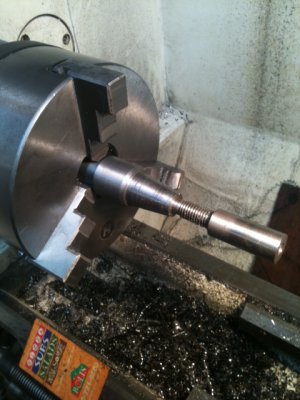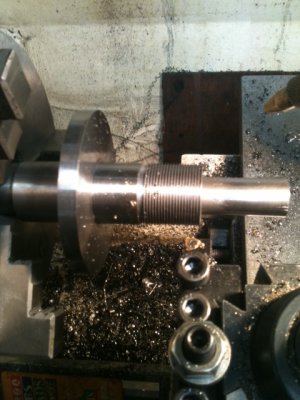The thread about B&S taper reamers (
http://www.hobby-machinist.com/show...r-Straight-shaft-w-o-spinning-between-centers) has come to a close. The purpose of the reamer was to complete these balanced grinder hubs and we're in a position to resume... You might want to look at the first few posts of this thread to refresh your memory.
When making these, it's important to plan the sequence of operations. I'm going to do all the backside work first and have chosen the rear face as the starting geometry. There is plenty of meat on the blank part so there's plenty of room to bring all the other dimensions in line.
First, the piece is propped with parallels to give a little clearance to face the back. Always remember to remove the parallels before spinning-up. A base hole is drilled all the way through as a starting point for the taper cut. The material is 1045 and it's already been fully normalized. It's very easy and nice to work with and the ER80s welds caps came right off.
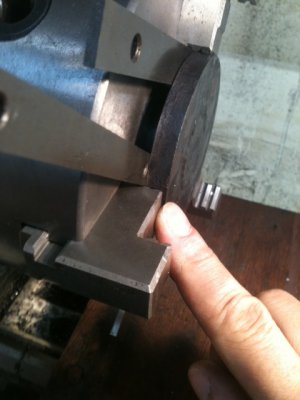
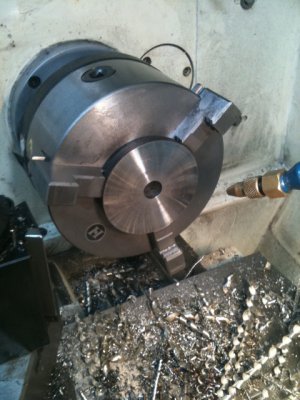
Next, the taper is cut by critically setting the compound angle and using only compound travel to move the boring bar. I've shown many times how to use DIs and make Rise over Run setups and this is how the angle of 7.125[SUP]o[/SUP] was set here. If you need help with that, let me know and we'll go over it more closely.
The cross slide is moved back to take 15 thou DoCs until the backside diameter is just shy of one inch. I stopped at roughly 0.995". It's hard to make that measurement since there's no real lip but, in this case, close enough is good enough. The depth of the taper is predefined by geometry and I keep pushing in until it stops cutting. Remember to lock the compound and disable any possibility of engaging autofeed. This is close work to the chuck and you'll crash in a heartbeat. BTW: I used the "outside" jaws because the other set would not allow me to insert the stub part of the hub in the chuck bore.
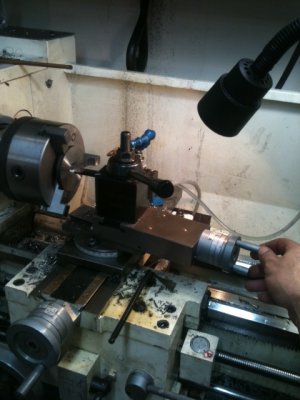
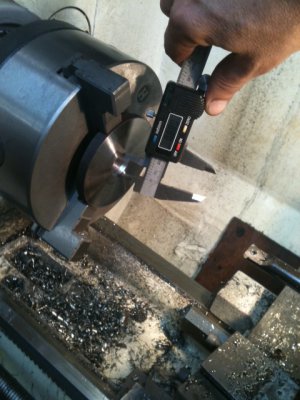
A groove is needed to accommodate some balance weights. I don't use this groover often but it's handy. It needs a new carbide insert and I can't seem to locate one. Any clues folks on where to get them? Anyhow, I'll be making many of these (4 more) so, the groove will be uniformly placed on all units.
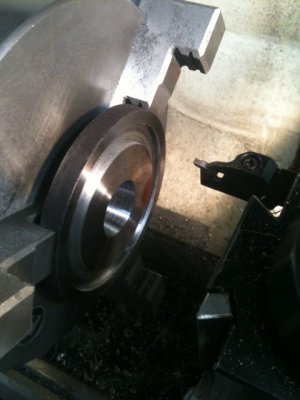
Safety note: In this procedure, the lathe safety is engaged and the unit is powered off. I think you know why.
The taper reamer that was just made earlier is inserted, light pressure from the tailstock is applied and it's manually cut. Happy to report, the cutter went through the metal like butter. Nice even swarf piled up in the flutes. I realize now though, I should cut the flutes about 20 thou deeper as the cutter would quickly pack up and need to be wiped clean. (and yes, that's a bad angle on my wrist but I was forced into that because I can't put too much pressure on the fingertips yet).
The taper came out very nice and the ending hole size is about dead on at 1" -which is what is needed for the arbor on my particular surface grinder.
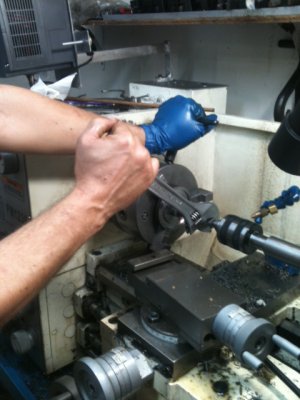
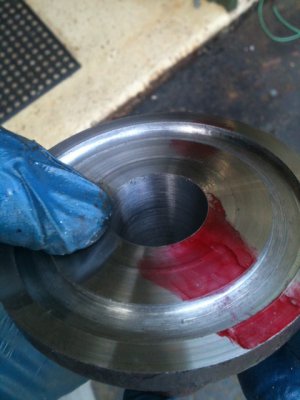
More later
Ray








![IMG_0073[1].JPG IMG_0073[1].JPG](https://www.hobby-machinist.com/data/attachments/21/21944-11d863804a5cd2cb0a404c528eab852b.jpg)







